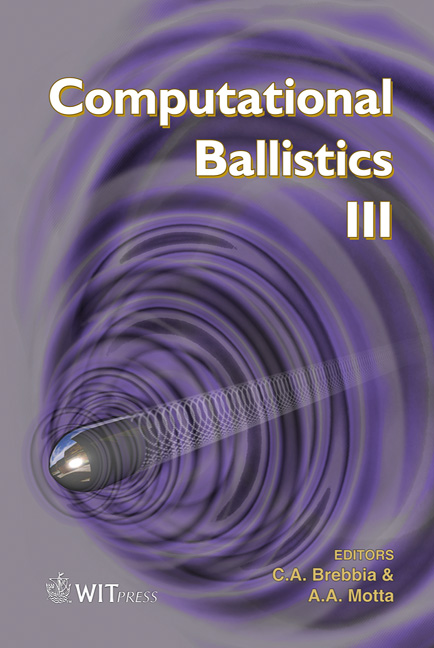Safety Checks And Hit Probability Computation In Numerical Trajectory Calculation Using Error Propagation Technology
Price
Free (open access)
Transaction
Volume
45
Pages
10
Published
2007
Size
733 kb
Paper DOI
10.2495/CBAL070141
Copyright
WIT Press
Author(s)
A. Kuhrt & H. Rothe
Abstract
In fire control systems using numerical trajectory integration, safety checks and hit probability information still is based on empirical parameters. The need for a modern and precise security testing on a defined level of confidence and tailored hit probability computationwere the motivation to develop the technology outlined in this paper. The methods are based on trajectory calculation using a modified point mass model that considers drag, lift,Magnus and Coriolis forces, gravity and all atmospheric influences. The Gaussian law of the propagation of the stochastic error within a system of dependent and independent variables was used to generate a vector of standard deviations for all error afflicted parameters every integration time step. This approach leads to a flightpath dataset of the projectile, not only giving information about position and velocity, but also about their standard deviations. The check for a minimum height over ground or distance to no-fly zones is very easy and can be performed with a changing level of confidence throughout the trajectory. Hit probability calculation is done automatically and considers all current data that has influence on the projectile’s trajectory. Keywords: error propagation, safety checks, numerical integration, crest clearance, hit probability, multivariate statistics. 1 Introduction In fire control systems using numerical trajectory integration, safety checks and hit probability information still is based on empirical parameters. Even modern systems using time consuming routines on calculating numerical derivatives for a trajectory perturbation in order to gain hit probability information. The need for a
Keywords
error propagation, safety checks, numerical integration, crest clearance, hit probability, multivariate statistics.




